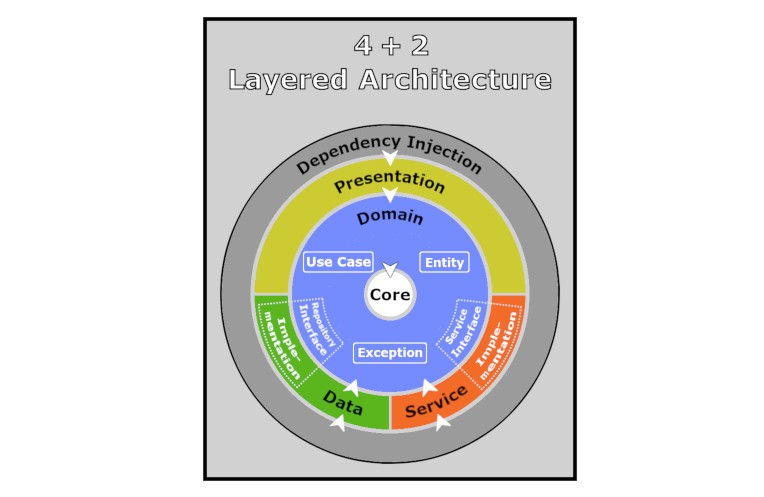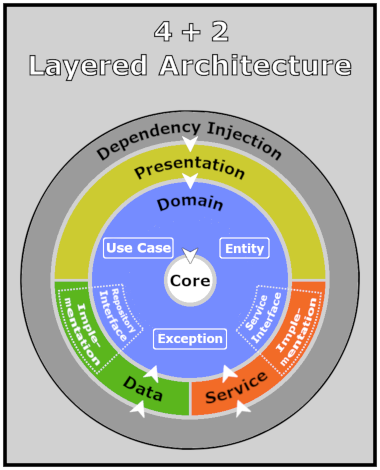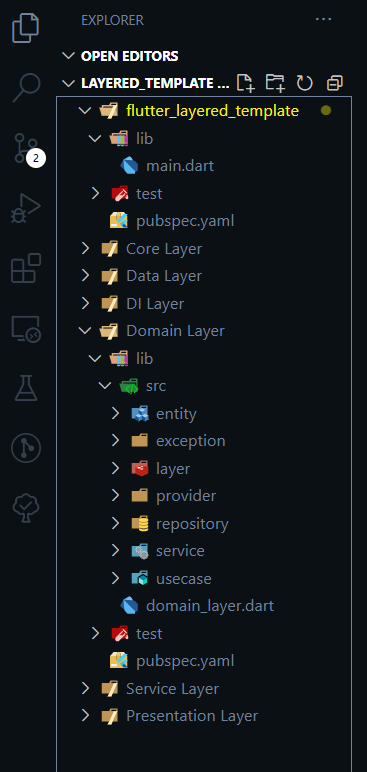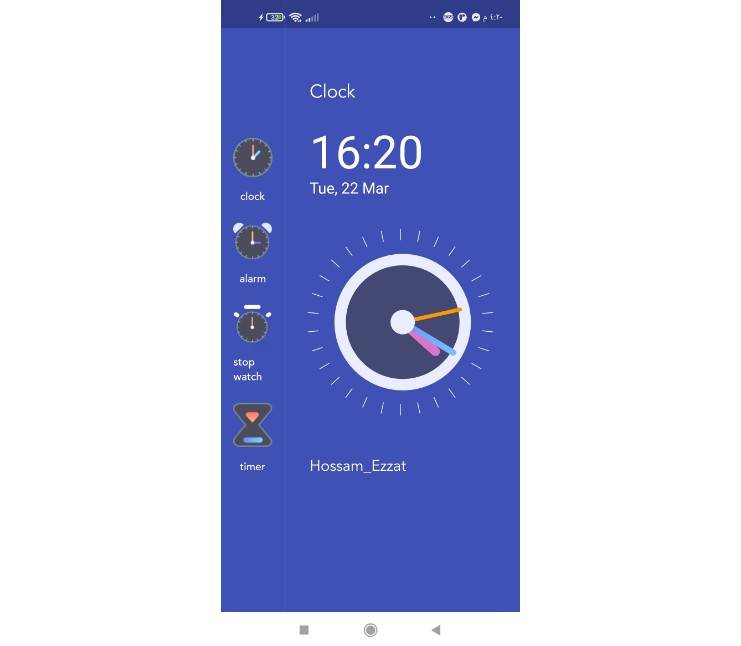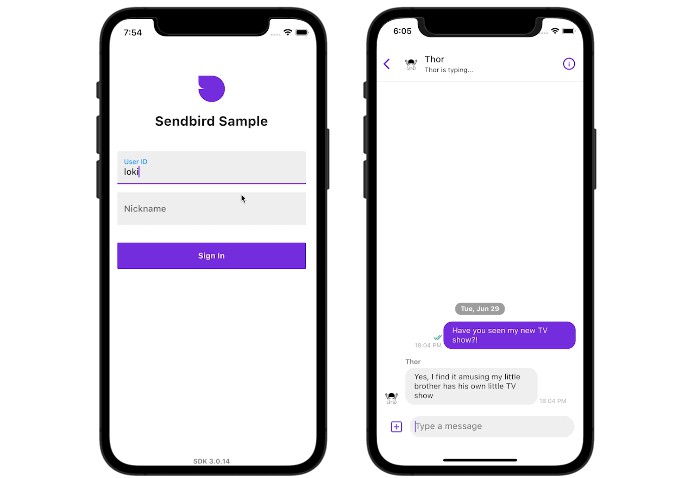A Flutter implementation of 4+2 Layered Architecture structure using ObjectBox persistence
This is an implementation of the architecture described in 4+2 Layered Architecture and its companion publication 4+2 Layered Architecture – A Flutter Implementation.
This template extends flutter_layered_template converting “in memory” storage to use ObjectBox library.
This is actually a conversion from a NotifierAPI to a StreamAPI. It is a case when a change for an outer layer does impact an inner layer (Domain) because the new library offers a different API and we better using it! Stream and Future APIs are common to deal with remote invocations and async calls, but it is also very handy for observed content notifications, replacing the Notifier API. Although we had to change the API in the Domain’s Repository and UseCase interfaces the imapact was very well defined, mainly in UseCase’s API clients (Presentation Layer). And here we see how great Riverpod consumer API is… it was simple and beautiful to convert from NotifierAPI to StreamAPI in Presentation Widgets!
This template:
- Provides the project structure with all suggested layers, each in a separate package.
- Implements a simple domain in a runnable sample application.
- Has three Flutter dependencies to make note of:
Architecture overview:
The 4+2 Layered Architecture describes the importance of Separation of Concerns in software development. When applying to project architecture I structured the application with:
- 4 Major Layers:
- Domain Layer (business rules)
- Data Layer (persistence)
- Service Layer (external services)
- Presentation Layer (UI)
- 2 Accessory Layers:
- Core Layer (shared library)
- Dependency Injection Layer (dependency inversion)
Layer objects
A key implementation in this proposal is the use of an AppLayer object for each structured layer, the configuration of each layer and the interaction between layers are responsibilities of these objects. Initialization is orchestrated by Dependency Injection‘s layer object.
The DILayer object is initialized in the main method, and inside this call DILayer object fetchs and initializes all other layer objects. Then it configures the DomainLayer object with all required dependencies (interface implementations) retrieved from provider layers (DataLayer and ServiceLayer objects).
Once more, the driving force behind the use of these layer objects is Separation of Concerns: no layer needs to know about the internal implementations of any other layer.
Project structure:
All code is separated in layers, each layer organized as a separate internal package. This separation of concerns makes inter layer dependencies explicity and tests modular.
The main project structure, shown in the following image, has:
- flutter project files: pubspec.yaml, build**, etc
- lib folder with main.dart
- packages folder containing all layers:
- _core_layer
- _data_layer
- _di_layer
- _domain_layer
- _service_layer
- _presentation_layer
- test folder for main project
Each layer folder has its own package structure with:
- pubspec.yaml
- test folder for that layer
Main project and outer layers pubspec.yaml use path dependencies to refer to inner layers, for example, in _domain_layer‘s pubspec you see:
dependencies:
_core_layer:
path: ../_core_layer
In this structure image I show my VSCode Explorer using MultiRoot feature (aka Workspace files) setting each layer as a root folder. I use this MultiRoot feature combined with Explorer Exclude extension to have a focused view for my projects.
The image shows just the Domain Layer open for exemplification.
Besides these files shown in the image there are a number of configuration files for flutter, VSCode, GIT and others. Since we are working with 6 extra internal packages we get a lot of these configuration files and code navigation on VSCode explorer becomes very clumsy. Thus the suggestion to use this Explorer Exclude extension.
Below my configuration for MuiltiRoot and Explorer Exclude worspace. This configuration is provided in this template at .vscode/layered_template.code-workspace file:
{
"folders": [
{ "path": ".." },
{ "path": "../packages/_core_layer", "name": "Core Layer" },
{ "path": "../packages/_data_layer", "name": "Data Layer" },
{ "path": "../packages/_di_layer", "name": "DI Layer" },
{ "path": "../packages/_domain_layer", "name": "Domain Layer" },
{ "path": "../packages/_service_layer", "name": "Service Layer" },
{ "path": "../packages/_presentation_layer", "name": "Presentation Layer" }
],
"settings": {
"files.exclude": {
"**/.git": true,
"**/.svn": true,
"**/.hg": true,
"**/CVS": true,
"**/.DS_Store": true,
"**/Thumbs.db": true,
"**/.dart_tool": true,
"**/.idea": true,
"**/.vscode": true,
"**/*.iml": true,
"**/.metadata": true,
"**/.packages": true,
"**/CHANGELOG.md": true,
"**/LICENSE": true,
"**/README.md": true,
"**/analysis_options.yaml": true,
"**/pubspec.lock": true,
".code-workspace": true,
".flutter-plugins": true,
".flutter-plugins-dependencies": true,
".gitignore": true,
"android": true,
"build": true,
"packages": true
},
"explorerExclude.backup": null
}
}
The sample domain:
This template defines a simple domain model with “in memory” temporary persistence. Persistence is implemented using a StateNotifier to keep entities and notify storage state changes. The purpose is not to implement a full featured application, but rather to provide a simple application with full layered architecture structure.
Using this template for a new Flutter project:
This a start up template for a layered architecture project.
-
Click on Use this template on this template main page in github:
https://github.com/cc-nogueira/flutter_layered_template_objectbox/
-
Clone your repository to your development machine:
git clone https://github.com/your-repo/your-project.git
- Change name in pubspec.yaml
name: your-project
- Run the provided utility project.dart that initializes the main project and all layer packages, creating configuration files that not stored in git (project and build files).
cd <your-project>
dart project.dart init
- Open Workspace from File
Rename workspace file from .vscode/layered_template.code-workspace to <your-project>.code-workspace
Open VSCode
Choose "Open Workspace from File...: from the File menu
Select <your-project>/.vscode/<your-project>.code-workspace
This provided project.dart utility has commands to init, clean and build the project and its internal packages. You can always run commands in a specific package folfer using the terminal, for example you can run build_runner to generate json or freezed files in the domain layer folder. But when you want to run build_runner or clean for all layers you better running dart project.dart with the specific command.
References:
Publications:
- 4+2 Layered Architecture (english)
- 4+2 Layered Architecture – A Flutter Implementation
Videos:
- 4+2 Layered Architecture – Flutter Implementatioh (english)
- Flutter: Arquitetura 4+2 em Camadas (portuguese)
